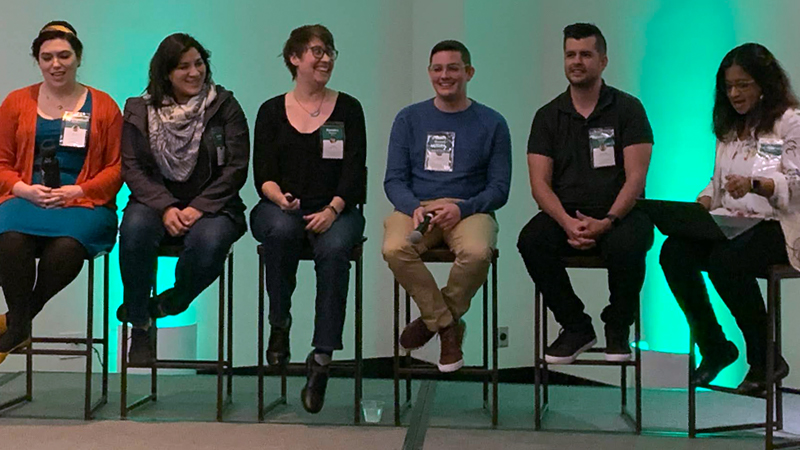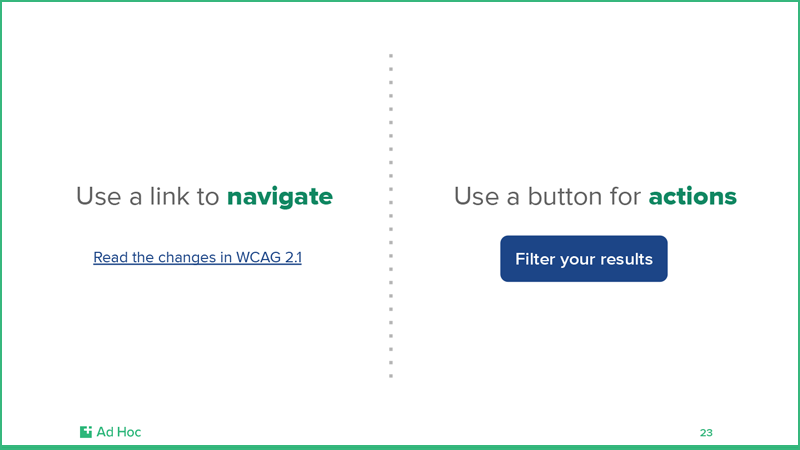Accessibility Camp 2020
Like Ad Hoc’s Ops Camp, this was an opportunity to bring staff from across the organization together to hear from internal experts and spread that knowledge across our teams. These camps offer an internal conference experience tailored to the needs of our work. Bonus: they’re a valuable time for our remote team to better get to know each other in real life.
Over the three-day camp, attendees got to participate in hands-on exercises, listen to panels, and learn how to apply accessibility best practices to their work. Here’s a closer look at some of the topics we covered:
Semantic HTML Panel Discussion: Accessibility experts from across Ad Hoc’s disciplines held a discussion about semantic HTML and why it still matters.

Empathy Prompt Exercise: Camp attendants used ideas from EmpathyPrompts.net, like trying to type by holding a pen in your mouth, to get a sense of how people with different abilities accomplish everyday tasks.

Designing with Accessibility in Mind: A talk introducing practical methods to accommodate types of ability when designing digital services.

The theme of this year’s Accessibility Camp was accessibility beyond compliance, which is the idea that accessible design shouldn’t stop when you meet standards like Section 508 or WCAG 2.0. My teammate Elissa Frankle Olinksy characterizes it better than I ever could:
Accessibility Beyond Compliance isn’t about fear. It’s not running from something. It’s running to an equitable, inclusive future where end users participate in development and where people building websites think about how an actual human being will interact with them.
Accessibility is a core value at Ad Hoc. It spans across all of our disciplines from engineering to product management. This means building with accessibility in mind from the beginning of a project, from sketch to deployment in production, from sprint planning meetings to architecture diagrams, and everything in between. It also means doing so not just because we have to meet contractual accessibility requirements, but because it’s the right thing to do, and because accessible services are better for everyone. When the digital infrastructure we build is available to more people, more people are enabled and engaged with their government and the services our society offers. That’s the world we’re running to.
Related posts
- Developer-driven focus management for single-page applications
- Navigating government barriers to human-centered design
- How to create an inclusive user research environment
- Accessible design for cognitive considerations
- Accessibility without fear and beyond compliance
- Why design skills are a power-up for researchers
